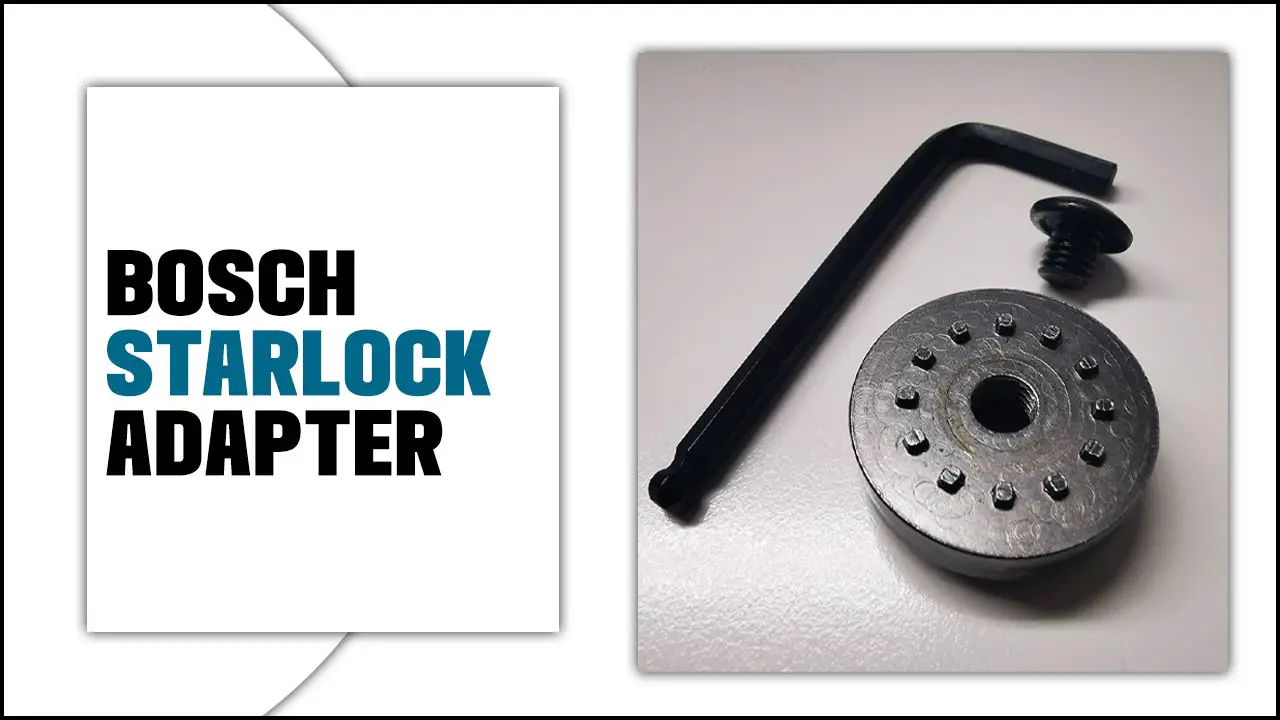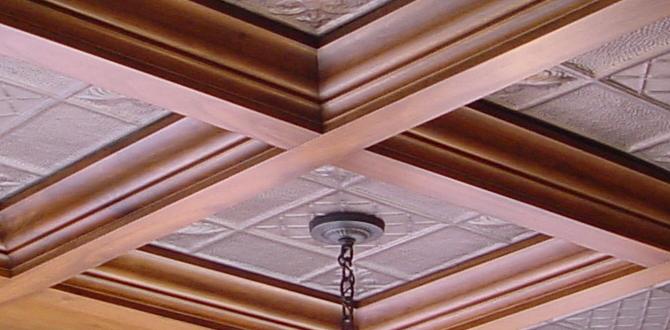Have you ever noticed water leaking from your faucet? It’s annoying, right? Many people think fixing it is too hard. But what if I told you that changing a faucet cartridge is something you can do yourself? It’s easier than you might think!
A faucet cartridge controls the water flow. Over time, it can wear out and cause leaks. Fortunately, replacing it can save money and fix the problem quickly. Imagine turning on your faucet and not hearing a drip! Sounds nice, doesn’t it?
In this article, we’ll show you how to change a faucet cartridge, step by step. You will feel proud knowing you did it on your own! So, grab your tools, and let’s dive into this simple project that can make your home better.
How To Change A Faucet Cartridge: A Step-By-Step Guide

How to Change a Faucet Cartridge
Changing a faucet cartridge is a simple task that anyone can do. Begin by turning off the water supply to prevent any leaks. Next, remove the faucet handle, usually by loosening a screw. Take out the old cartridge and replace it with a new one. Finally, reassemble everything and turn the water back on. Did you know that a faulty cartridge can waste gallons of water? Fixing it not only saves water but also can lower your bill.Understanding Faucet Cartridges
Explanation of what a faucet cartridge is. Types of faucet cartridges (compression, cartridge, ball, and ceramic disc).A faucet cartridge is the heart of your tap, allowing water to flow. It controls hot and cold water mixing. Imagine it as the talented DJ of your sink, mixing tunes (or water) just right!
| Type | Description |
|---|---|
| Compression | Uses rubber washers to stop water flow. |
| Cartridge | Has a single or double lever for temperature control. |
| Ball | Features a rotating ball with chambers for water. |
| Ceramic Disc | Uses two ceramic discs that slide over each other. |
Each type has its quirks, like different animal personalities. Choose wisely, and your faucet will gurgle happily for years!
Tools and Materials Needed
List of essential tools (screwdriver, adjustable wrench, etc.). Materials required (replacement cartridge, plumber’s grease, etc.).Before changing a faucet cartridge, gather some tools and materials. You will need:
- Screwdriver: A flathead or Phillips, depending on your faucet.
- Adjustable Wrench: Useful for tight spots.
- Pliers: For better grip on small parts.
Next, collect the materials:
- Replacement Cartridge: Get one that fits your faucet model.
- Plumber’s Grease: To help parts move smoothly.
Having these ready makes the job easier and faster!
What tools do I need to change a faucet cartridge?
You need a screwdriver, adjustable wrench, and pliers to change a faucet cartridge.Identifying the Type of Faucet
How to determine the type of faucet you have. Importance of knowing your faucet type for cartridge replacement.Knowing your faucet type is crucial before changing the cartridge. It saves you time and prevents headaches. Is it a compression, cartridge, ball, or ceramic disc faucet? Don’t worry! You can easily find out by looking under the handle or checking the manufacturer’s info. Use this handy table to help identify your faucet:
| Faucet Type | How to Identify |
|---|---|
| Compression | Has separate hot and cold knobs. |
| Cartridge | One handle that you pull up and turn. |
| Ball | A single handle with a rounded ball inside. |
| Ceramic Disc | This has two handles and a flat shape. |
Remember, identifying the right type makes it easier to order the correct cartridge. Even faucets need to feel understood!
Shutting Off the Water Supply
Stepbystep guide to locating and turning off the water supply. Tips for preventing water leaks during the process.First things first, find the water supply valve. It’s usually under your sink, hiding like a sneaky ninja. Turn it to the right to shut it off. This action prevents a mini water explosion that no one wants to clean up. You know, wet socks and soggy floors are best avoided!
| Tips to Prevent Leaks |
|---|
| Check for loose connections. |
| Grab a towel to catch drips. |
| Have a bucket handy! |
Follow these steps, and you’ll have a dry, happy workspace. Remember, a little preparation makes a big difference. Happy fixing!
Removing the Faucet Handle
Instructions for removing different handle types. Common challenges and solutions when removing the handle.First, look for the screw on top or back of the handle. This is often hidden. Use a flathead screwdriver to remove it. If the handle is stuck, try gently wiggling it. If that doesn’t work, apply some vinegar to loosen it. For pull-up handles, pull straight up after unscrewing. Remember to keep track of screws and pieces as you go! This will make putting it back together easier.
What should I do if the faucet handle is stuck?
If your faucet handle is stuck, try this:
- Use vinegar: Soak a cloth in vinegar and wrap it around the handle.
- Wiggle gently: Move the handle side to side while pulling up.
- Check for screws: Make sure no screws are missed that hold the handle in place.
Accessing the Cartridge
Guide on removing the retaining nut and any other components. Safety precautions to take while accessing the cartridge.Before diving into the depths of your faucet, let’s not forget safety first! Turn off the water supply to avoid any surprise showers. Grab a basin to catch any drips—it’s like a mini water park in your kitchen! Now, use a wrench to remove the retaining nut. Give it a gentle twist, and it should loosen up. If it’s stubborn, pretend you’re opening a pickle jar. Here’s a handy table to keep everything straight:
| Step | Action |
|---|---|
| 1 | Turn off the water supply |
| 2 | Place a basin underneath |
| 3 | Use a wrench to remove the retaining nut |
| 4 | Gently pull out the cartridge |
Finally, remember to wear safety goggles. Water may be fun, but you don’t want it in your eyes! Now you’re ready to access that cartridge like a pro.
Replacing the Faucet Cartridge
Stepbystep instructions for removing the old cartridge. How to install the new cartridge correctly.Time to tackle that leaky faucet! First, turn off the water supply (yes, that’s important!). Next, use a screwdriver to remove the handle. Then, take out the old cartridge. It’s like a tiny plumbing ninja that needs a new home! Now, grab your shiny new cartridge and slide it in. Be sure it fits snugly and securely. Finally, reattach the handle. Voila! You’ve just leveled up your DIY skills and kept your kitchen or bathroom from sounding like Niagara Falls!
| Step | Description |
|---|---|
| 1 | Turn off the water supply. |
| 2 | Remove the handle with a screwdriver. |
| 3 | Take out the old cartridge. |
| 4 | Insert the new cartridge securely. |
| 5 | Reattach the handle. |
Reassembling the Faucet
Instructions for reattaching the handle and securing components. Tips for ensuring everything is tightened properly.Once you’ve put the faucet cartridge back in, it’s time to reassemble. Start by taking the handle and sliding it onto the cartridge. Secure it with a screw. If your handle has a little cap, don’t forget to pop it back on—otherwise, it’ll look like your faucet is missing a tooth! Now, check all components to ensure they are tight. Use a wrench to avoid any leaks later. Remember, a tightly secured faucet is a happy faucet!
| Step | Action |
|---|---|
| 1 | Slide the handle onto the cartridge |
| 2 | Screw the handle in place |
| 3 | Snap on any decorative caps |
| 4 | Tighten all remaining screws |
Turning the Water Supply Back On
How to safely turn the water supply back on. Checking for leaks and proper functionality.After finishing the faucet work, it’s time to turn the water back on. First, locate the shut-off valve. Slowly turn it back, but be careful! Watch for leaks as soon as the water flows. If you see any drops, tighten the fittings. Test the faucet to ensure it runs well. If it flows freely, you did a great job!
What should I do if I see leaks?
If you find leaks, don’t panic! Tighten the fittings carefully. Sometimes, it takes a little adjustment to stop the leaks. If the leaks continue, you may need to check the cartridge again.
Common Mistakes to Avoid
List of frequent errors during the cartridge replacement process. Tips for troubleshooting issues if they arise.Replacing a faucet cartridge can be tricky. Here are common mistakes to avoid:
- Not turning off the water supply first.
- Forgetting to note how the old cartridge is positioned.
- Using the wrong tools, which can cause damage.
- Failing to check for leaks after installation.
If problems arise, retrace your steps. Ensure all parts are tight and aligned. Don’t panic; mistakes can often be fixed easily. With patience, you can do it right!
What should you do if the faucet still leaks after replacing the cartridge?
If your faucet leaks after the change, check the installation. Ensure the cartridge was inserted correctly. Also, check seals for damage. Sometimes, removing and reinstalling can help fix the issue!
When to Call a Professional
Signs that indicate it might be best to hire a plumber. Cost considerations for professional help versus DIY.Not all tasks should be tackled at home. Look for signs that you need a plumber. Here are some clues:
- Water leaks that don’t stop.
- Low water pressure everywhere.
- Strange noises from pipes.
- Persistent clogs that won’t clear.
Hiring a professional can save time and trouble. While DIY might seem cheaper, a plumber’s skill can prevent bigger issues. In fact, repairs that go wrong can end up costing more. Always weigh your options before deciding.
When Should You Get Help?
If you notice any major problems or feel unsure, it’s best to call in a pro. Some plumbing issues can lead to big damage. Don’t hesitate to ask for help when needed!
Conclusion
In summary, changing a faucet cartridge is simple. First, turn off the water supply. Then, remove the handle and old cartridge. Replace it with a new one and reassemble the faucet. Always check for leaks afterward. Now you’re equipped to tackle this job! For more tips, read other articles or watch step-by-step videos to help you succeed.FAQs
What Types Of Faucet Cartridges Are There, And How Do I Identify Which One I Need To Replace?There are three main types of faucet cartridges: compression, cartridge, and ball. Compression faucets have rubber washers, while cartridge faucets use a single or double cartridge. Ball faucets have a special ball that controls the water flow. To find out which cartridge you need, remove the faucet handle and look inside. You can then take a picture or write down what you see to help find the right replacement.
What Tools And Materials Do I Need To Change A Faucet Cartridge?To change a faucet cartridge, you’ll need a few tools and materials. First, get an adjustable wrench. You’ll also need a screwdriver, which can be flat or Phillips. Make sure you have a new faucet cartridge that fits your faucet. Finally, have some towels handy to clean up any water.
How Do I Turn Off The Water Supply Before Replacing A Faucet Cartridge?To turn off the water supply, look for the shut-off valves. They are usually under the sink. Turn the valves clockwise to close them. If you can’t find them, turn off the main water supply for the house. This will stop all the water before you change the faucet part.
What Are The Steps Involved In Removing The Old Cartridge And Installing The New One?First, turn off the printer and unplug it. Open the printer cover to see the old cartridge. Carefully take out the old cartridge by pulling it straight up. Next, take the new cartridge out of its package. Finally, put the new cartridge in place and close the printer cover. Plug the printer back in and turn it on.
How Can I Troubleshoot Any Leaks Or Issues After Changing The Faucet Cartridge?To check for leaks after changing the faucet cartridge, first, turn on the water slowly. Look for any water dripping or pooling around the faucet. If you see water, try tightening the screws or connections. You can also check if the cartridge is sitting correctly. If it’s still leaking, you might need to replace it again.








